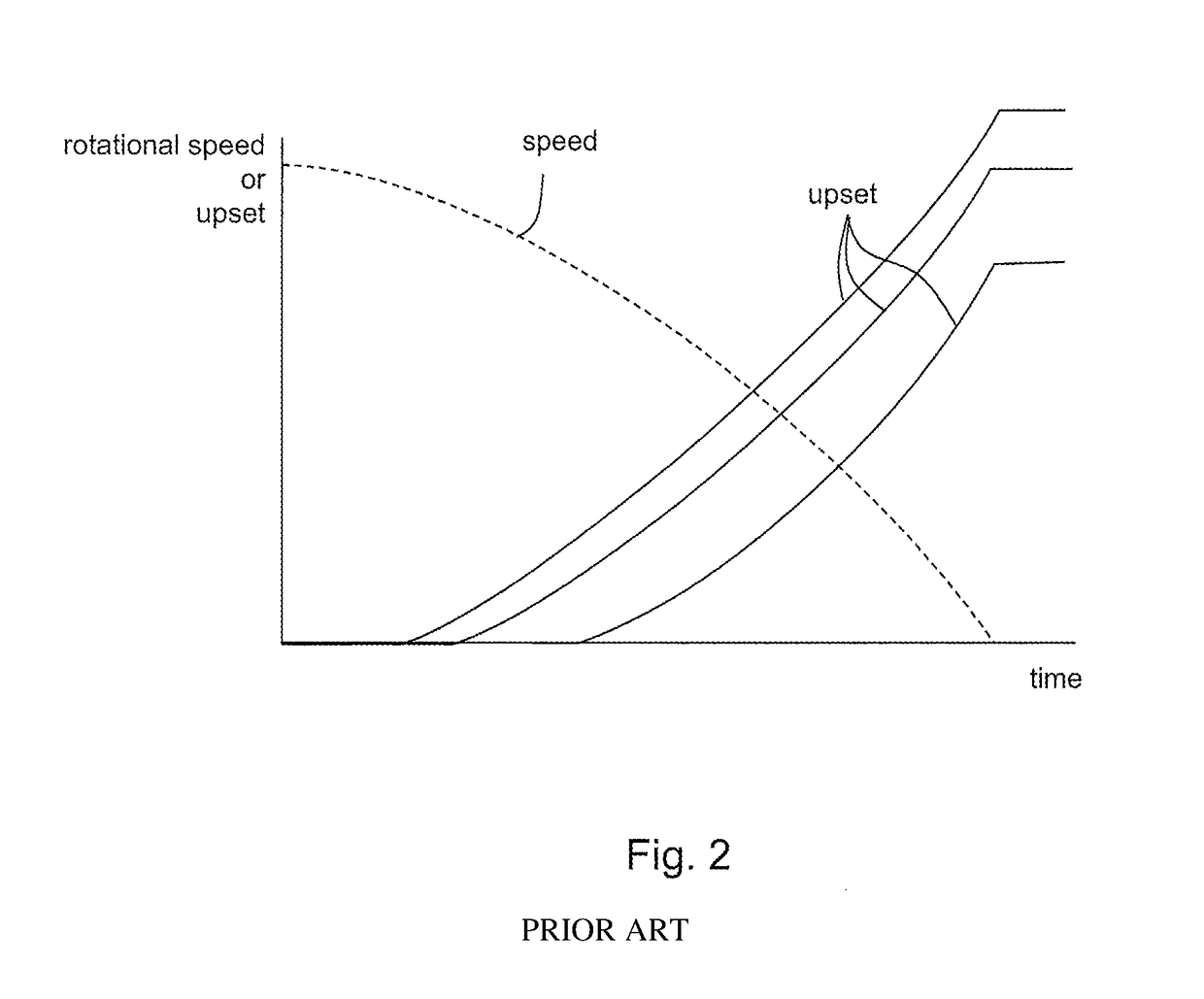Rotary friction welding
a friction welding and friction welding technology, applied in the field of rotary friction welding process, can solve the problems of non-axisymmetric contact, variation in the conditioning duration, and upset of the welding process, so as to reduce the variability of the initial contact conditions at the weld surface, improve the defect expulsion effect, and reduce the upset variability
- Summary
- Abstract
- Description
- Claims
- Application Information
AI Technical Summary
Benefits of technology
Problems solved by technology
Method used
Image
Examples
Embodiment Construction
[0035]FIG. 1(a) shows schematically a longitudinal cross-section through a pair of conventional tubular workpieces 1, 2 in readiness to undergo rotary friction welding. The workpieces are aligned on a common axis A-A and have respective end faces forming weld surfaces 3, 4.
[0036]The left hand workpiece 1 is attached to a flywheel or drive system which is rotated at a predetermined speed, indicated by the solid arrow.
[0037]As shown in FIG. 1(b), the workpieces are brought together so that the weld surfaces 3, 4 make contact. However, due to manufacturing tolerances, the weld surfaces are not completely flat, and also not perpendicular to the axis A-A. In addition, the workpieces exhibit a diameter mismatch, eccentricities and / or axis misalignment. Accordingly, the weld surfaces meet at an angle θ, and have an initial point of contact which is offset to the outer edge of the workpiece walls, producing a large gap G between the weld surfaces at their inner diameters. During the conditi...
PUM
| Property | Measurement | Unit |
|---|---|---|
| angle | aaaaa | aaaaa |
| width | aaaaa | aaaaa |
| width | aaaaa | aaaaa |
Abstract
Description
Claims
Application Information
 Login to View More
Login to View More - R&D
- Intellectual Property
- Life Sciences
- Materials
- Tech Scout
- Unparalleled Data Quality
- Higher Quality Content
- 60% Fewer Hallucinations
Browse by: Latest US Patents, China's latest patents, Technical Efficacy Thesaurus, Application Domain, Technology Topic, Popular Technical Reports.
© 2025 PatSnap. All rights reserved.Legal|Privacy policy|Modern Slavery Act Transparency Statement|Sitemap|About US| Contact US: help@patsnap.com



